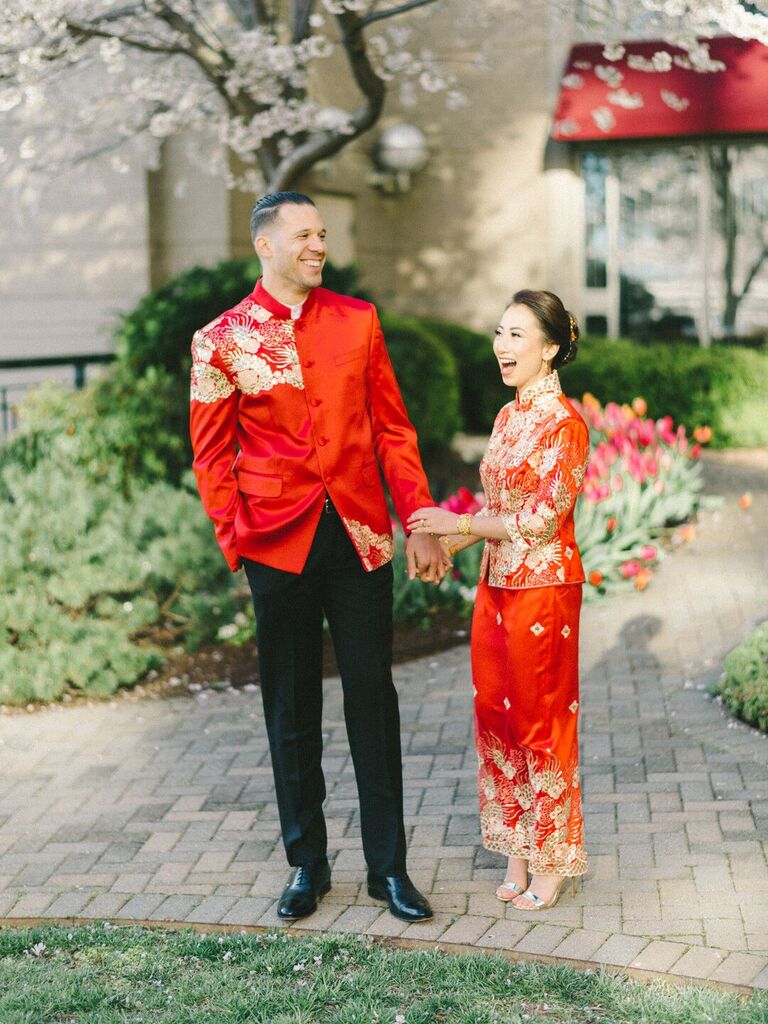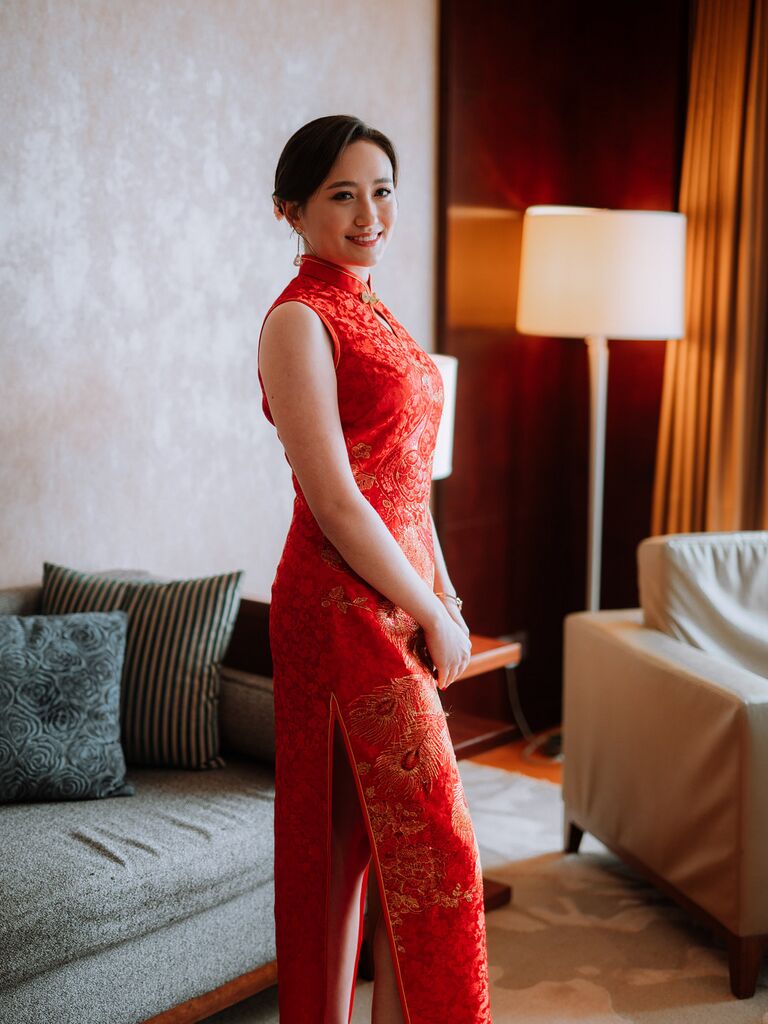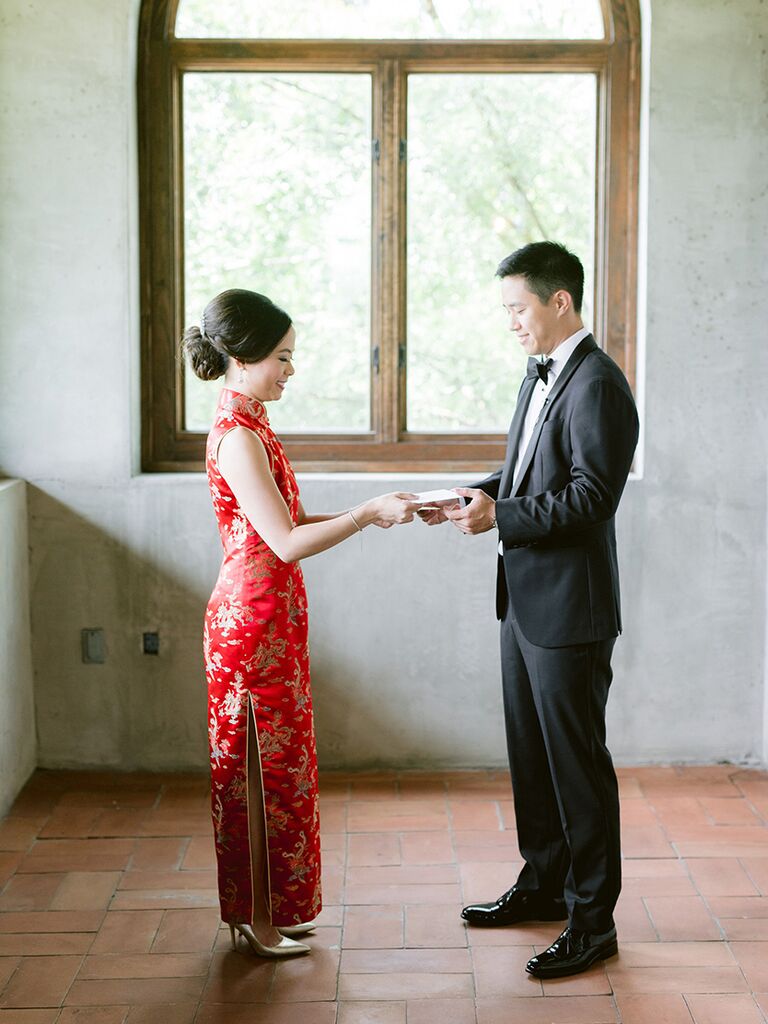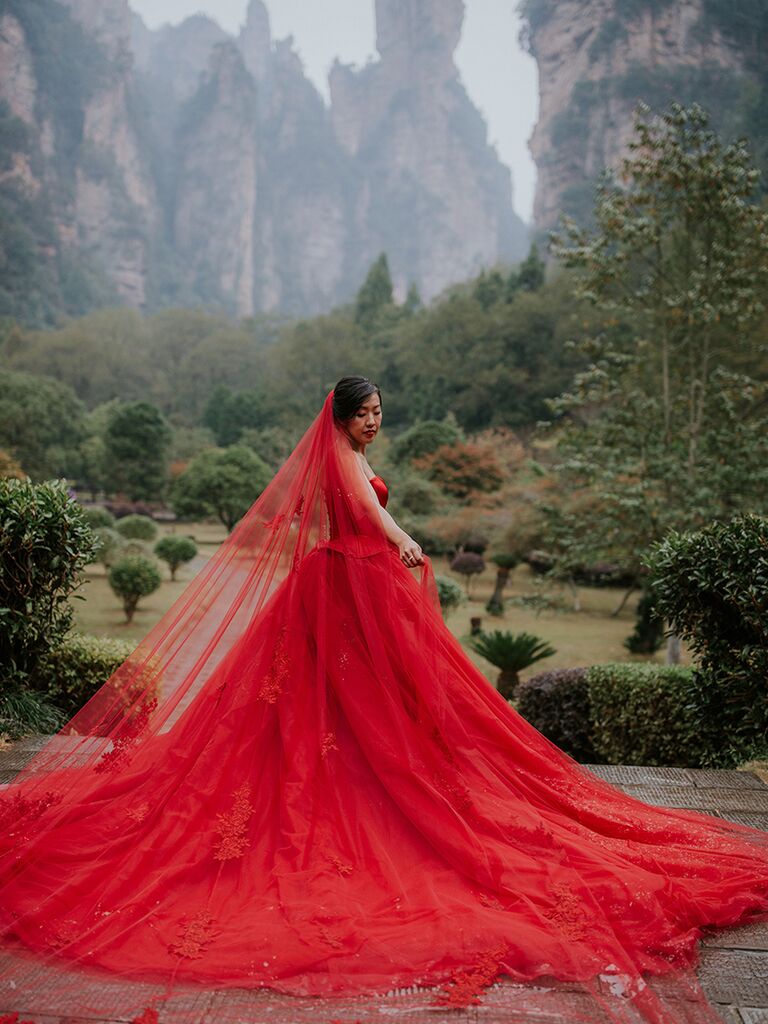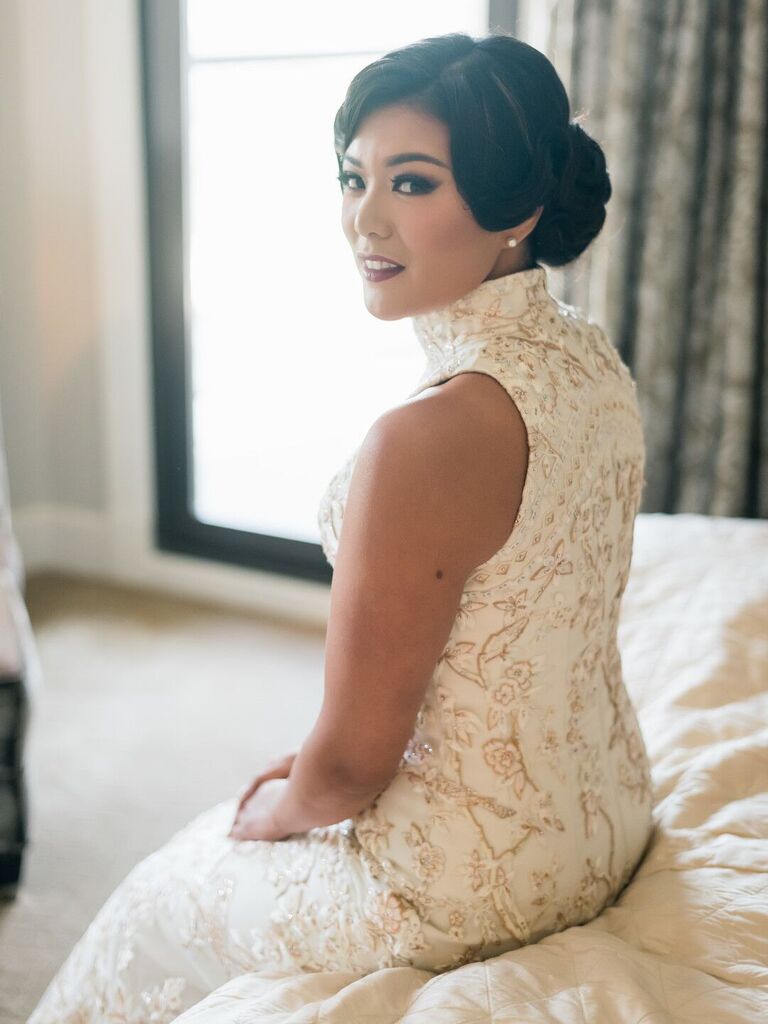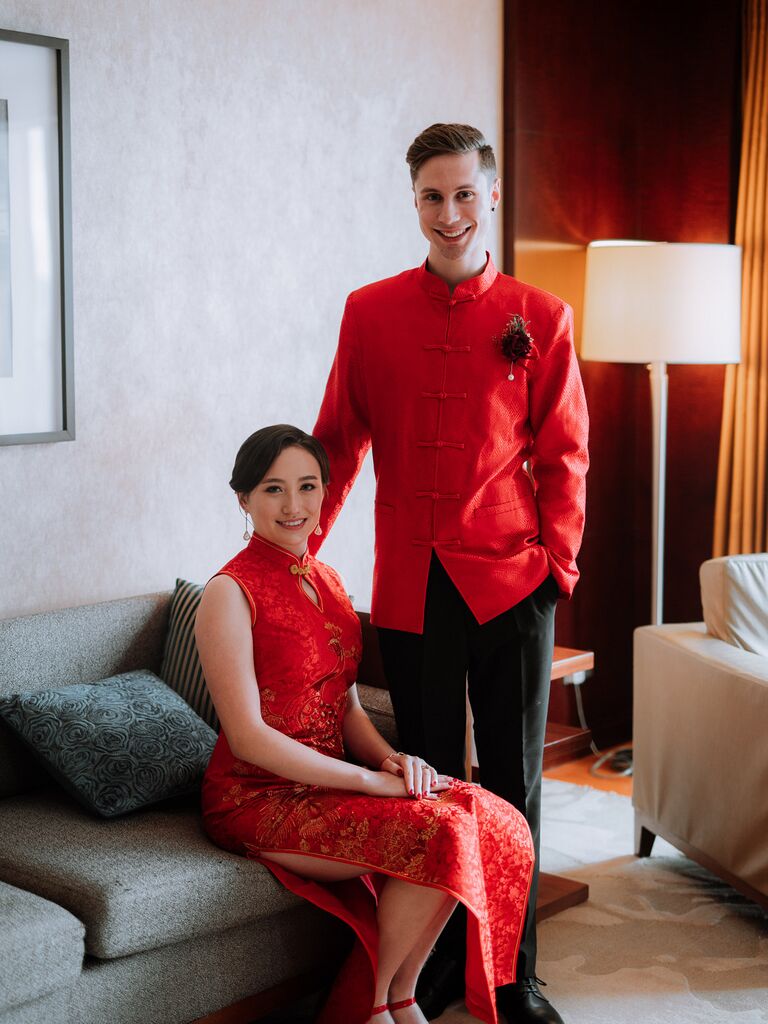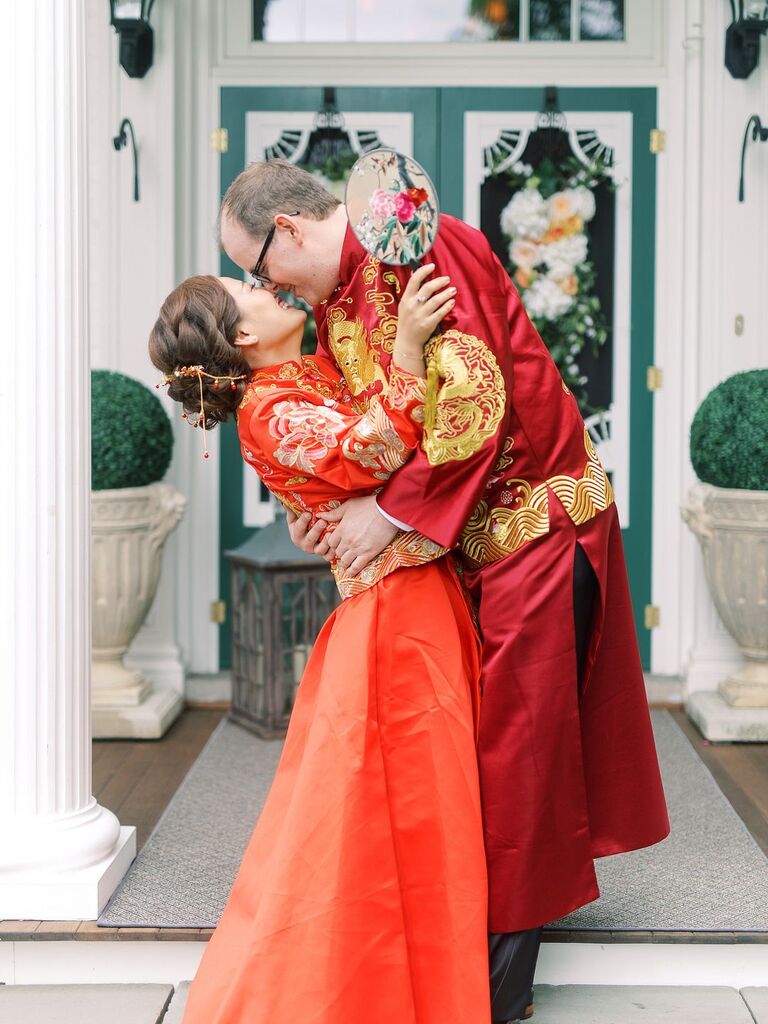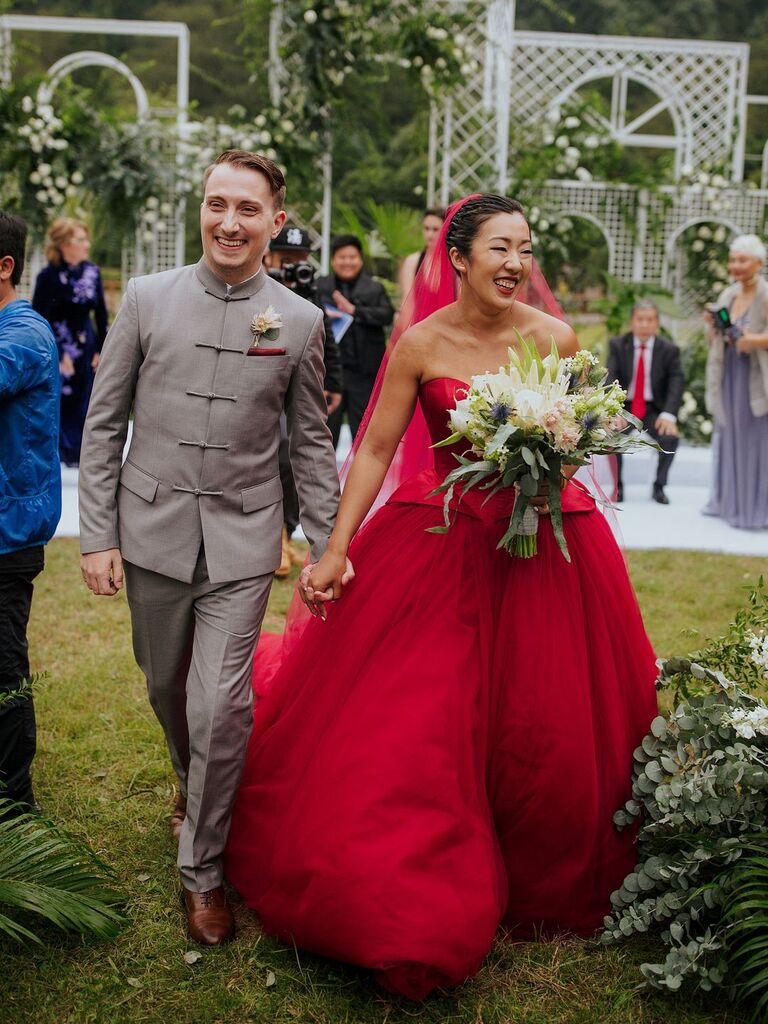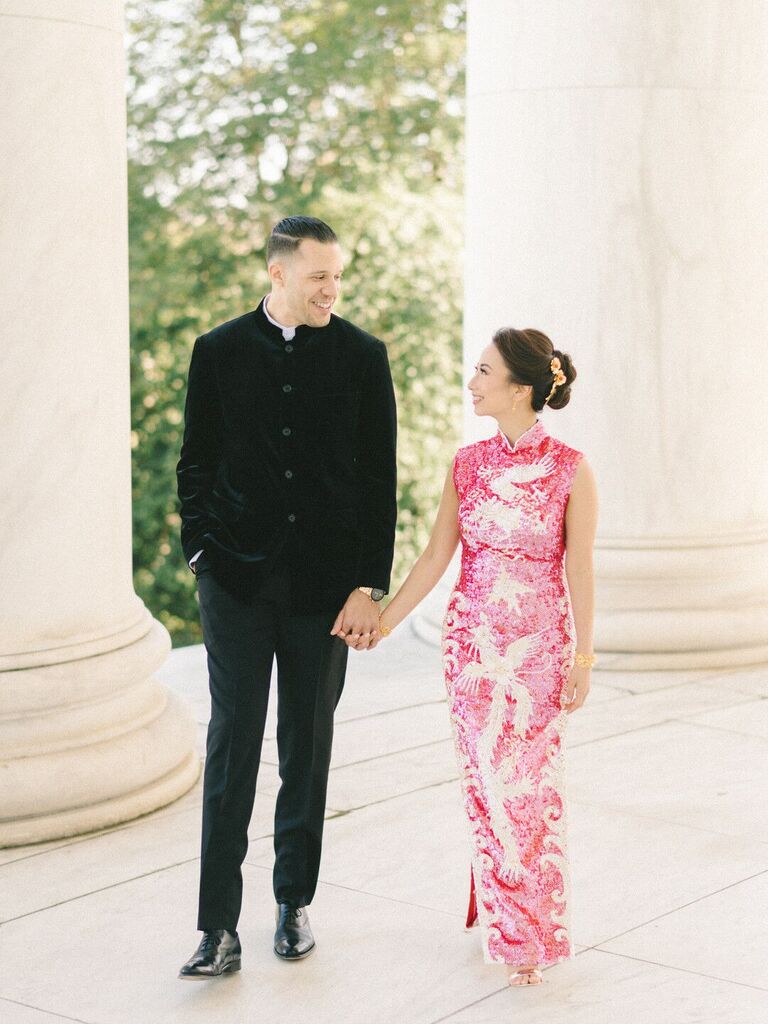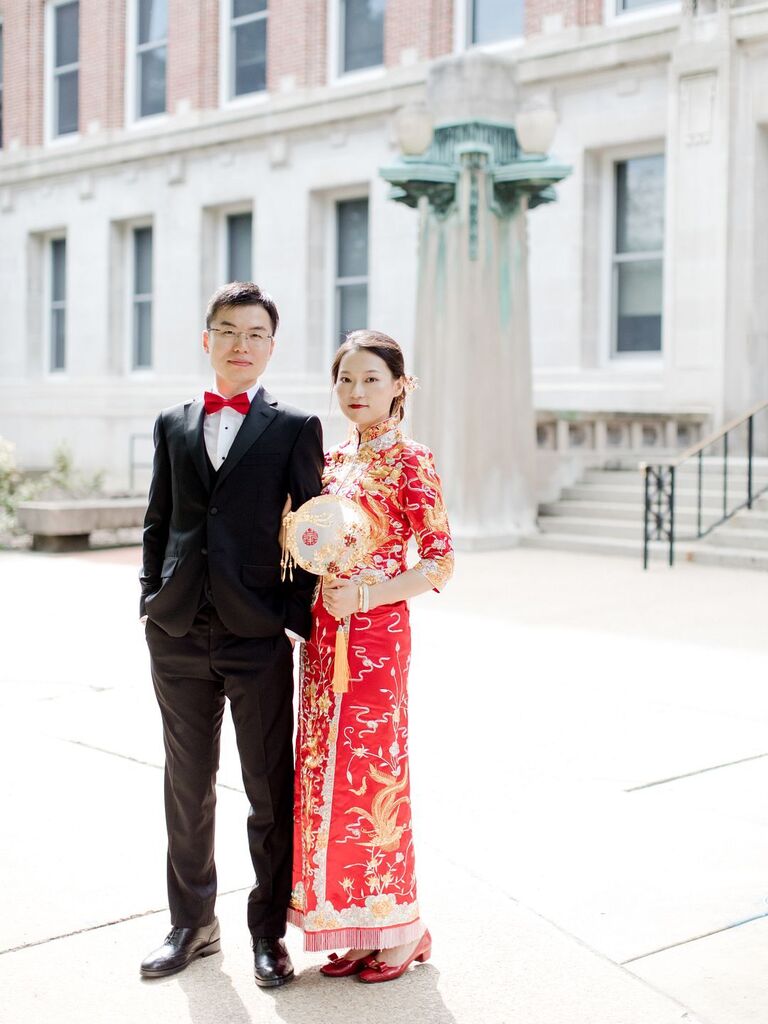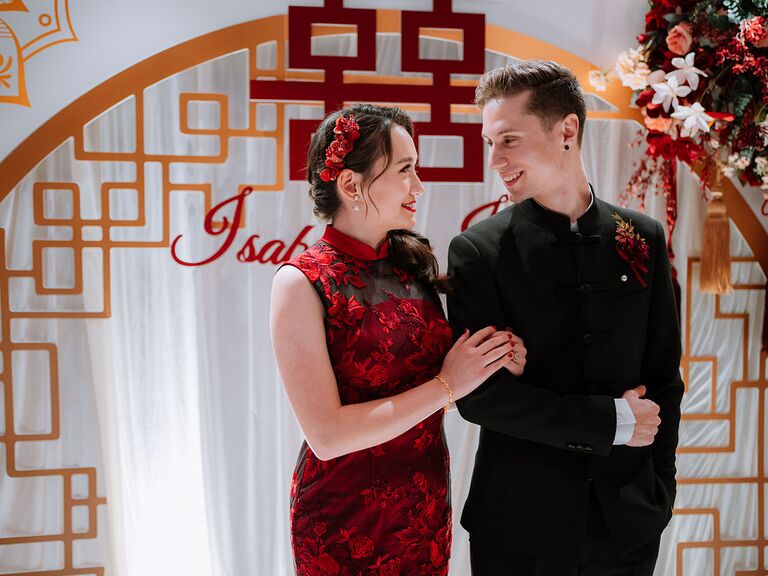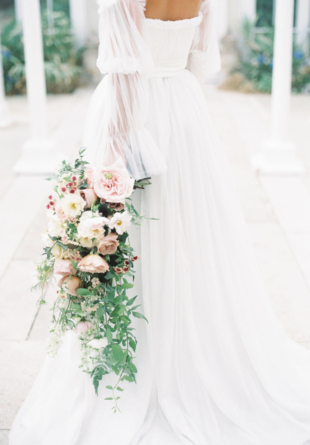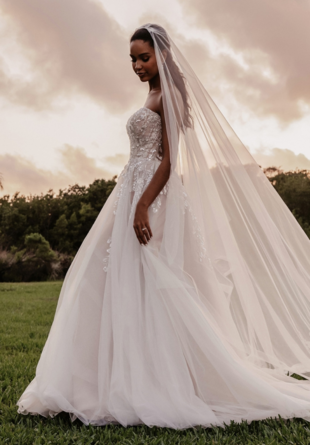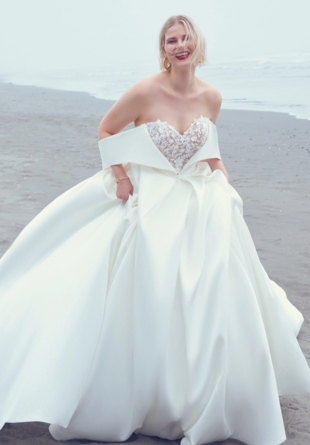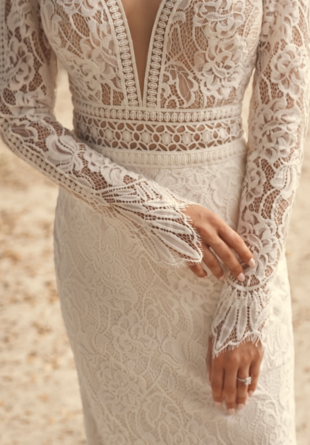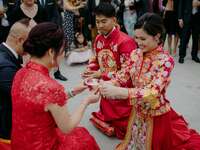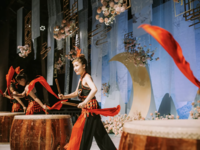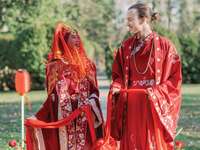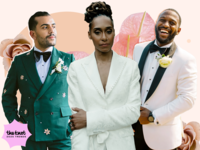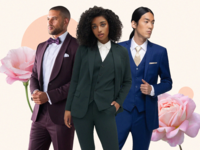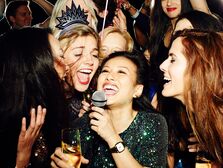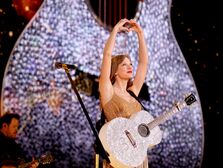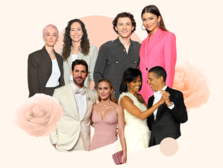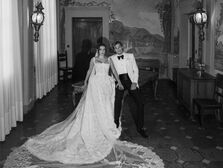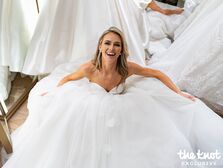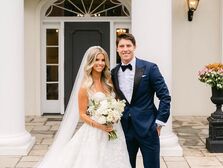Your Ultimate Guide to Finding the Perfect Chinese Wedding Outfit
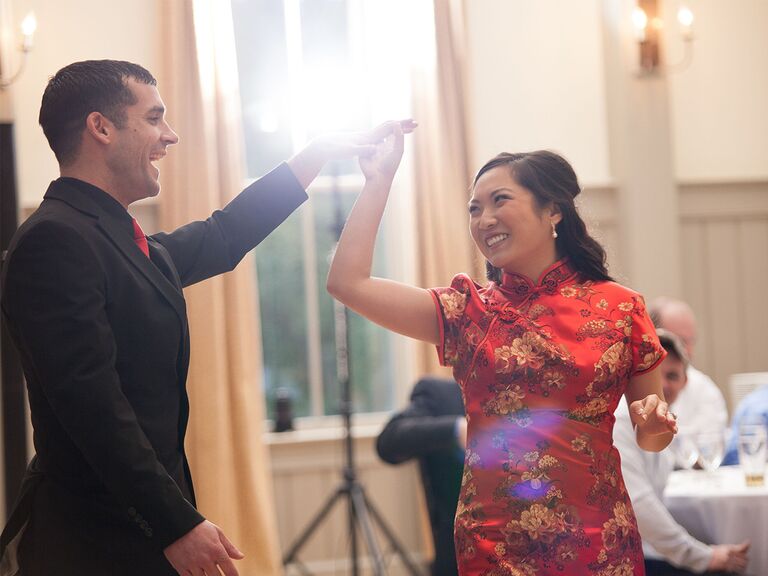
Picking out the perfect outfit to wear while you say "I do" can be an overwhelming task, and if you want to don something that celebrates your Chinese culture, your attire options are even more plentiful. To help simplify your search for the Chinese wedding outfit of your dreams, we enlisted some help from the experts. Enter Nicole Froelich, Hong Kong-based wedding planner and founder of Nicole Please Weddings, and Joyce Lee, Chinese and multicultural wedding planner and founder of Showcase Your Style Event Planning. Together, we created the ultimate guide to choosing Chinese wedding attire like a pro.
"Chinese wedding attire is steeped in symbolism, history and beauty. Whether couples choose to follow family tradition or reinterpret it with a modern lens, the most important element is that their attire tells their unique story," says Froelich. From a full breakdown of the most traditional outfits to modern styling tips and inspiration, here's everything you need to know about Chinese wedding outfits—and how to pick the perfect one if you're planning a Chinese wedding.
In this article:
- Traditional Chinese Wedding Outfit Guide for Couples
- How to Choose a Chinese Wedding Dress
- How to Choose a Chinese Groom Outfit
- Where to Buy Chinese Wedding Clothes for Couples
Traditional Chinese Wedding Outfit Guide for Couples
Before you decide on your official Chinese wedding look, it's essential to familiarize yourself with the culture's most traditionally worn outfits. With the help of Froelich and Lee, we're breaking down the basics for both brides and grooms below.
What Colors Do Couples Wear for a Chinese Wedding?
There's a reason Chinese brides typically wear red to a wedding. "In traditional Chinese weddings, red is the most auspicious and widely celebrated color as it symbolizes happiness, prosperity and good fortune," says Froelich. "It's the go-to for bridal attire, wedding decorations and even invitations." The custom began in the Ming Dynasty over 650 years ago and still remains a lucky wedding color for traditional Chinese couples.
In addition to red, gold and yellow also play a major role in traditional Chinese wedding clothes. "These colors are seen as imperial and lucky, often woven into embroidery or accessories," says Froelich. On the other hand, notable Chinese wedding dress colors that would stray from tradition are white and black, as they're both associated with mourning and death in Chinese culture.
What Does a Bride Wear for a Chinese Wedding?
While Chinese bridal attire has changed significantly over the years, there are two types of traditional outfits to-be-weds most commonly wear today: the qipao or cheongsam and the qun kwa.
Qipao or Cheongsam: This Chinese traditional wedding outfit consists of a long, form-fitting red dress with a Mandarin collar and side slits, often featuring gold embroidery and elaborate adornments. Though the word "qipao" (Mandarin for "banner robe" or "flag robe") was typically used in Northern China and "cheongsam" (Cantonese for "long dress") was the term used in Southern China, today, they're used interchangeably. Both refer to the same style of dress—a traditional form-fitting sheath with a Mandarin collar.
Qun Kwa: This two-piece set consists of a jacket ("kwa") and a long skirt ("qun") and usually features a dragon and phoenix to symbolize male and female harmony. "It's typically red with gold thread, symbolizing wealth and fertility," says Froelich. Sometimes written "qun kua" or "qun gwa," it was traditionally worn in Southern China, most often by Cantonese brides. One of the most common types of qun kwas today is the xiuhefu, a more modern take that can feature many motifs in addition to the traditional dragon and phoenix—think everything from flowers to Koi fish.
No matter the preferred outfit, Chinese brides traditionally top off their looks with gold jewelry and accessories, often incorporating phoenix-themed pieces. Some will also wear a red veil, known as a "honggaitou," to symbolize purity, modesty and good luck.
What Does a Groom Wear for a Chinese Wedding?
One of the most common Chinese wedding outfit choices for grooms today is the tang suit or tangzhuang—but there are a few other options to-be-weds typically sport. You'll also see Chinese grooms wear the more traditional chang pao ma gua, or on the more modern side, the zhongshan suit.
Tang Suit or Tangzhuang: This traditional Chinese groom outfit consists of a long robe paired with a mandarin jacket, often in deep red, gold or sometimes even navy. "These outfits can feature subtle dragon motifs to symbolize strength, power and protection," says Froelich. The tang suit is a slightly less formal interpretation of the chang pao ma gua, which we'll touch on more below.
Chang Pao Ma Gua: Popularized as wedding attire during the Qing Dynasty, this traditional Chinese groom outfit consists of a long robe (chang pao) and ornate jacket (ma gua). It's typically crafted from silk in black, red or gold, and designs can range from simple and minimalist to detailed patterns featuring symbols like dragons, phoenixes or clouds.
Zhongshan Suit: This sleek and refined Chinese groom outfit is the most modern choice of the bunch, but it's still considered traditional. Usually in blue, green or gray, it emerged in the 20th century and has the look of a Western suit but features Eastern details like a Mandarin collar and overlapping lapels secured with five buttons. "I have many clients who chose to wear a zhongshan suit, which I think is a good outfit for a groom who wants to match a bride in a traditional Chinese outfit but with something more modern than the chang pao ma gua," says Lee.
How to Choose a Chinese Wedding Dress
To choose a Chinese wedding dress for your unique celebration, consider whether you'd like to stick with tradition, lean into modern interpretations or perhaps do a little bit of both. Read on for Chinese wedding outfit advice and inspiration photos from real couples, and keep these words of wisdom from Froelich in mind: "We often remind our couples that it's not about replicating tradition perfectly—it's about honoring it in a way that feels authentic to themselves."
Traditional Chinese Wedding Dress Inspiration
Brides that want to go the traditional route will usually wear a cheongsam or qun kwa for their weddings. To decide between the two, consider what your top priorities are. The qun kwa may be considered the more timeless of the two, as it's worn strictly for weddings. On the other hand, cheongsams can be worn any time. If comfort is top of mind, remember that a qun kwa is two pieces with an A-line skirt, while a cheongsam is a figure-hugging one-piece. Lastly, keep their historical origins in mind. A cheongsam was traditionally worn by both Northern and Southern Chinese brides, while a qun kwa was strictly worn by Southern Chinese brides. That said, both options are beautiful and culturally relevant regardless of your Chinese heritage. Keep scrolling to see real-life wedding inspo photos featuring Chinese traditional wedding dresses.
This bride kept things classic with a beautiful red silk qun kwa, featuring eye-catching gold embroidery on both the skirt and jacket. She tied the look together with simple gold heels, along with gold bracelets, earrings and a hair accessory.
Here's one of the most traditional Chinese wedding dresses for brides: a sleeveless qipao wedding dress complete with a classic mandarin collar, side slits and gold embroidery.

While the groom stuck to western styling, this bride's classic red qipao gave a nod to Chinese tradition.
This bride opted for the ancient Chinese wedding dress style, the red qipao, while the groom stuck with a Western-style tuxedo.
Modern Chinese Wedding Dress Inspiration
According to Lee, lots of modern US brides will honor their Chinese heritage by sporting multiple wedding looks. "Many will choose to wear the Chinese outfits for their tea ceremony because they still want to wear the Western gown for the wedding ceremony," she says. "Sometimes, brides will also choose to wear the qipao as their reception dress, or they'll change into the qipao before they greet guests during the reception."
Another way brides can modernize their Chinese wedding look is by choosing a dress that fuses both Western and Eastern details. "We love encouraging subtle modernizations like a cheongsam in ivory silk with red embroidery or custom cuts with open backs or slits, which still honor Chinese heritage while feeling contemporary," Froelich says. "Some brides choose soft blush or champagne tones instead of bold red, and others opt for minimalist gold jewelry instead of full traditional jewelry pieces. The key is to balance modern touches with meaningful nods to the Chinese tradition." Ahead, take a look at some of the ways brides have given Chinese wedding outfits a modern touch.
If the goal is a modern take on a traditional wedding dress in China, you can't go wrong with a Western-style bridal gown in red instead of white. This bride completed her ensemble with a matching red veil for a dramatic, monochromatic look.
This Chinese bride dress paired traditional qipao elements with unique touches like black silk and orange embroidered flowers.
After saying "I do" in a white Western gown, this bride changed into a modern qipao wedding dress. Custom-made in China, the stunning second look featured red lace, a mermaid-style silhouette and a mandarin collar.
This bride paid a beautiful tribute to her Chinese heritage by donning a white Chinese qipao wedding dress for her tea ceremony. While the color was nontraditional, the silhouette and stunning gold embroidery kept things feeling classic.
How to Choose a Chinese Groom Outfit
There are certainly lots of options when it comes to Chinese groom attire. Whether you want to keep things classic with a chang pao ma gua, tang suit or zhongshan suit, or add subtle modern Western details to an Eastern-style suit or tux (think bold, embroidered bow ties and pops of red), there are no wrong answers here. Ahead, we're bringing you advice for traditional and modern takes alike, complete with outfit pictures to inspire your look.
Traditional Chinese Groom Outfit Inspiration
For grooms looking to go the traditional route with their Chinese wedding outfit, the most popular choices will be a chang pao ma gua, tang suit or zhongshan suit. All three are excellent choices with rich cultural history, but each has a slightly different appeal. A chang pao ma gua—often considered the groom counterpart to a bride's qun kwa—will be the most traditional choice. A zhongshan suit will be the most current option, which most closely resembles a Western-style suit or tux. Somewhere in the middle, and perhaps the most popular choice, is the tang suit due to equal influences from both Western and Eastern cultures. Scroll on for inspiration images featuring grooms who stuck to Chinese wedding traditions.
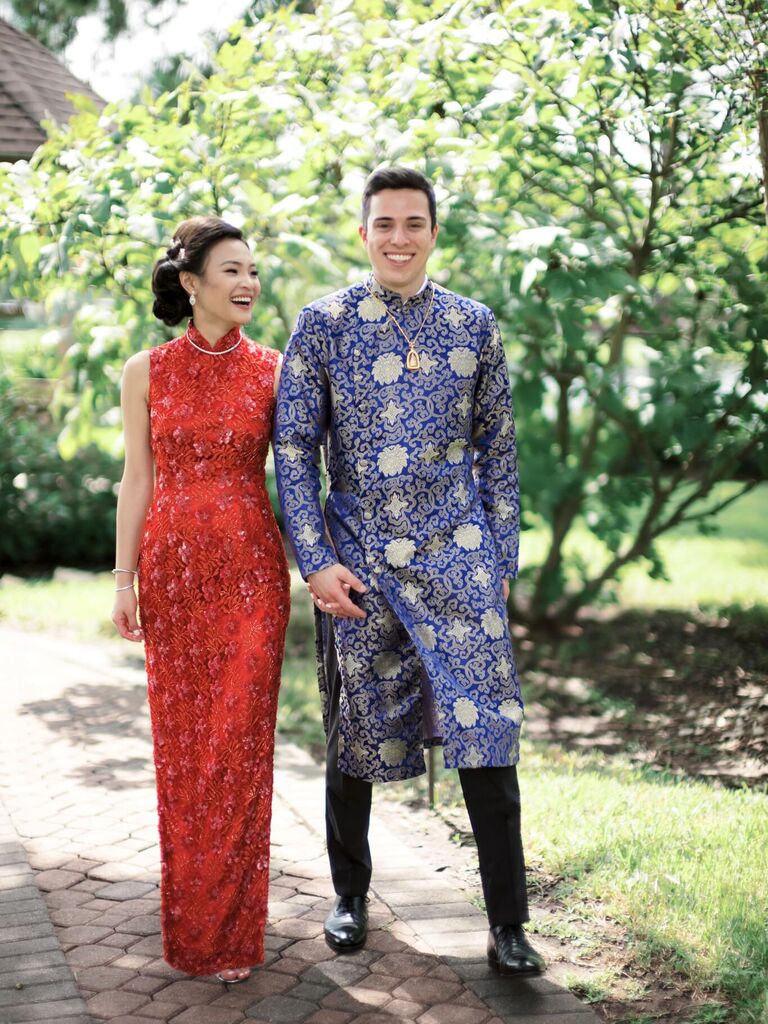
This groom complemented the bride's red qipao wedding dress with a traditional blue ma gua adorned with gleaming gold embroidery.
A bold red tang jacket was the perfect choice for this couple's traditional Chinese tea ceremony.
Before suiting up in traditional Western wedding attire, this couple wore classic Chinese wedding attire for their tea ceremony. The groom's chang pao ma gua was red with embroidered gold details.
In contrast to the bride's ultra-modern, red Chinese wedding dress style, this groom opted for a traditional tang suit in light gray.
Modern Chinese Groom Outfit Inspiration
Grooms that want to give their Chinese wedding outfit a modern touch can do so in many ways. Froelich and Lee both say their clients will often opt for a Western tuxedo or suit for the ceremony and reception, while keeping their look traditional for the Chinese tea ceremony. Another option is to choose an outfit that blends both Western and Eastern details. "Modern grooms can elevate their look with tailored mandarin-collar jackets in luxurious fabrics like velvet or brocade. Some even customize their tang suits with subtle embroidery or initials or pair a classic mandarin top with well-cut Western trousers," Froelich says. "We have also seen beautiful fusion looks like three-piece suits with traditional Chinese button closures, perfect for couples who want their wedding to feel both cross-cultural and personal." Keep scrolling for modern takes on Chinese wedding outfits for the groom.
To complement the bride's modern cheongsam wedding dress adorned with pink sequins, this groom opted for a modern mandarin-collar jacket made with rich velvet.
For an extra modern take on Chinese wedding attire, this groom paired his suit with a bold red tie featuring gold embroidery. It perfectly complemented the bride's modern red qipao for their tea ceremony.
While the bride sported a traditional Chinese-style wedding dress, the groom kept things modern with a Western tux, topping it off with a nod to Eastern tradition through a bold red bow tie.
For the ceremony, this groom swapped his traditional red tang suit for a modern, Mandarin-collar jacket featuring minimal details and an all-black colorway.
Where to Buy Chinese Wedding Clothes for Couples
Ready to start shopping for your Chinese wedding outfit? Start with this list of retailers, featuring options for traditional and modern takes alike.
- East Meets Dress: This Asian-American wedding dress retailer specializes in Chinese wedding outfits with the modern couple in mind—but don't let that fool you. Along with of-the-moment takes on Chinese wedding outfits, you'll also find beautiful styles that stick to tradition. Whether you want a classic Chinese cheongsam wedding dress or a fun jumpsuit with Eastern-style embroidery, East Meets Dress has you covered.
- Hanfu Story: Hanfu Story's collection of Chinese wedding attire is as impressive as it gets, offering a range of traditional options originating from all over China as well as plenty of modern takes, too. Even better, equality and inclusivity are at the heart of everything Hanfu Story has to offer, making it one of the best Chinese wedding dress websites with gender-neutral and plus-size options.
- Beth and Brian Qipao: Looking for totally custom Chinese wedding dresses and suits? Beth and Brian Qipao has your back. You'll also find a variety of qipaos, qun kwas and tang suits in traditional and modern variations alike.
- Sau Lee: This renowned Asian fashion designer is known for her glamorous designs that beautifully blend modern Western styles with traditional Chinese elements. While the majority of the offerings are geared toward everyday wear, her modern yet traditional Chinese wedding dress collection is definitely one you won't want to overlook.

